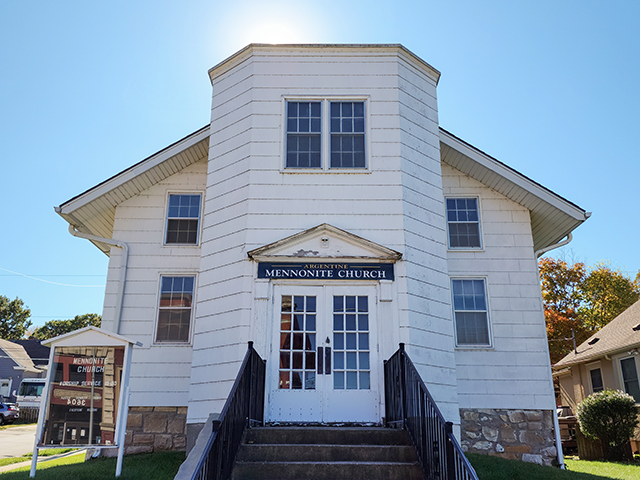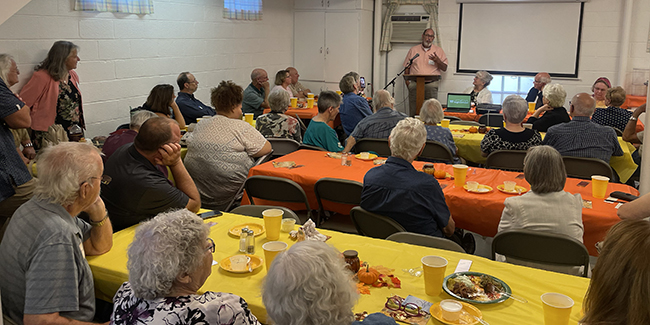By Kurt Rietema
Let’s not bury the lede here: we’ve just received the biggest donation in our history!
For the past 10 years, YF Neighborhood has run a nimble operation using borrowed space from neighborhood partners or rented space as in the case of Snack Shack KC, our after school hangout for middle and high school students. While the approach might be considered virtuous in its frugality, it has also meant that we’ve endured using spaces without air conditioning in the summer, or been confined to basements or used spaces that are unfriendly to always messy (and sometimes destructive) adolescents. Most importantly, it’s left us perpetually vulnerable to being relocated to other spaces.
Just under a year ago, we were approached by a neighborhood church with a 100+ year history and an aging congregation. We were invited to help them explore the next phase of their institutional legacy without a thought in our minds that they might entrust it to us. Yet over a series of conversations over the last year, they began to sense (while we began to dream) that we might be the ones to carry on their mission for a new generation.

A few weeks ago, our YF Neighborhood team gathered in the fellowship hall of Argentine Mennonite Church together with their pastor, members both past and present, and listened to stories of how these people loved God and loved their neighbors in this place for the past century. I already loved the salt of the earth character of the congregation and was energized by the dreams of what we might do in this space, but it wasn’t until that afternoon as Pastor Sandeep prayed over us that I felt the gravity and weight of the generations–their hopes and their dreams. They weren’t merely transferring a building to us, they were bestowing their calling and their mission upon our shoulders. This was no dying church. If anything, it was an act of faith, a letting go, so that something new might be reborn.
I witnessed that faith grow through their willingness to see something new emerge out of their past during conversations over the last year. We would want to remove the pews for flexible uses in the sanctuary. We’d have youth in the church who might use bad language, who might be confused about their identity, who may (and most definitely did) accidentally shove someone through the drywall. Are you ok with this? Are you willing to trust that though our mission and method may look different, our love for Jesus is the same? Over and over again, I was humbled by the faith of a church that holds both lovingly, yet loosely to its past so that the work of God might be revealed in a new generation.
As I reflect on this act of faith, my mind returns to the story of Simeon in Luke 2. Simeon’s eyes constantly searched the horizon for the new thing that God’s Spirit was to reveal. There would be an end to this foreign occupation. There would be an end to this pain. And soon. The Holy Spirit had assured Simeon that he would not take his final breath before he had seen the Messiah himself. Something stirred in him that morning. It was like the pulse of a magnetic field, the gravity pulled him to the temple like a mothership’s tractor beam. When the mother and father brought in the child Jesus to the temple, Simeon didn’t hesitate for a second. This was the one he had been waiting for. Lifting him into the air with all of the cinematographic drama of the lion cub Simba on Pride Rock, Simeon held Jesus and declared, “My eyes have seen your salvation, which you have prepared in the sight of all nations.” Jesus was the consolation that Israel had been waiting for. But Simeon didn’t end there, making the radical claim that this Messiah would be “a light for revelation to the Gentiles.” God’s love could not be contained within those ancient borderlines, it would not be bound by blood, nor by clan nor kin. In Jesus, Simeon saw that God’s Spirit was about to transgress genealogies and geography in a quest to do the unimaginable–to create one new human family with this child as the chief cornerstone (Eph. 2).
It’s hard for us to appreciate just how much Simeon’s announcement swam against the current of public opinion and generations of religious tradition. The reason for Israel’s political and economic turmoil, as it was popularly believed, was not because of a refusal to adapt and assimilate to Roman rule but because they had not adhered stringently enough to the old ways passed down to them by their ancestors. They needed to double down on their insistence that the influence of outsiders was detrimental to their project of restoring Israel to her former glory, not to acquiesce and invite them in.
Old age can have a curious way of either calcifying and entrenching someone in their ways on one hand or liberating them from the scrutiny of public opinion on the other. Perhaps the latter was true with Simeon, but I’m guessing that’s only half the answer. I suspect the other half is that the old practices of his religious devotion made him so attuned to the heart of God that he recognized that God was about to do something new. Simeon understood that a future that is more generous and hospitable to new faces and new ways of doing things doesn’t require disparaging its past. Rather, it might be key to being faithful in the present. Simeon had a faith that held lovingly, yet loosely to the past so that the work of God might go forth without missing his chance to witness God’s future unfolding before his eyes.
This is the kind of faith that I see in that church. Like Simeon, they realized that their future is not secured by doubling down on past custom, nor by trying harder nor building a fortress to protect themselves from the social and demographic upheavals in our neighborhood. Instead, their past and future are bound up in following God’s Spirit, willing to set aside tradition or taboo to make a new home for all God’s children.
About Kurt Rietema: Kurt is the Senior Director of YF Neighborhood at Youthfront. He holds a Master’s in Global Development and Social Justice from St. John’s University. Kurt is also an adjunct at MidAmerica Nazarene University and at William Jewell College. Kurt and his wife Emily live with their sons, Luke, Perkins and Leo in an under-resourced neighborhood of Kansas City, Kansas called Argentine.



